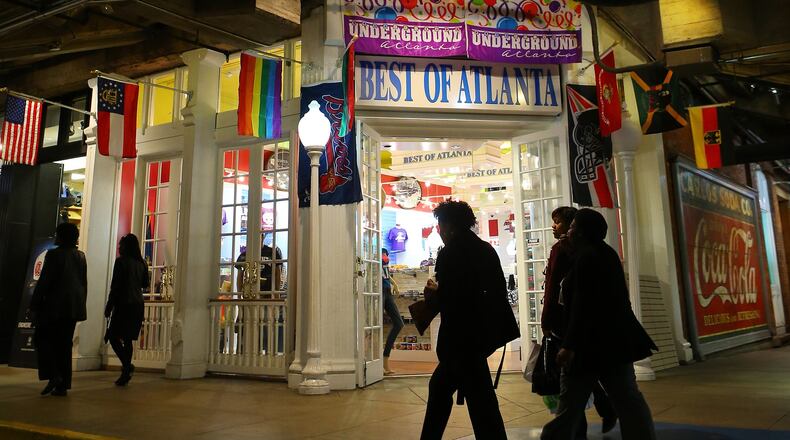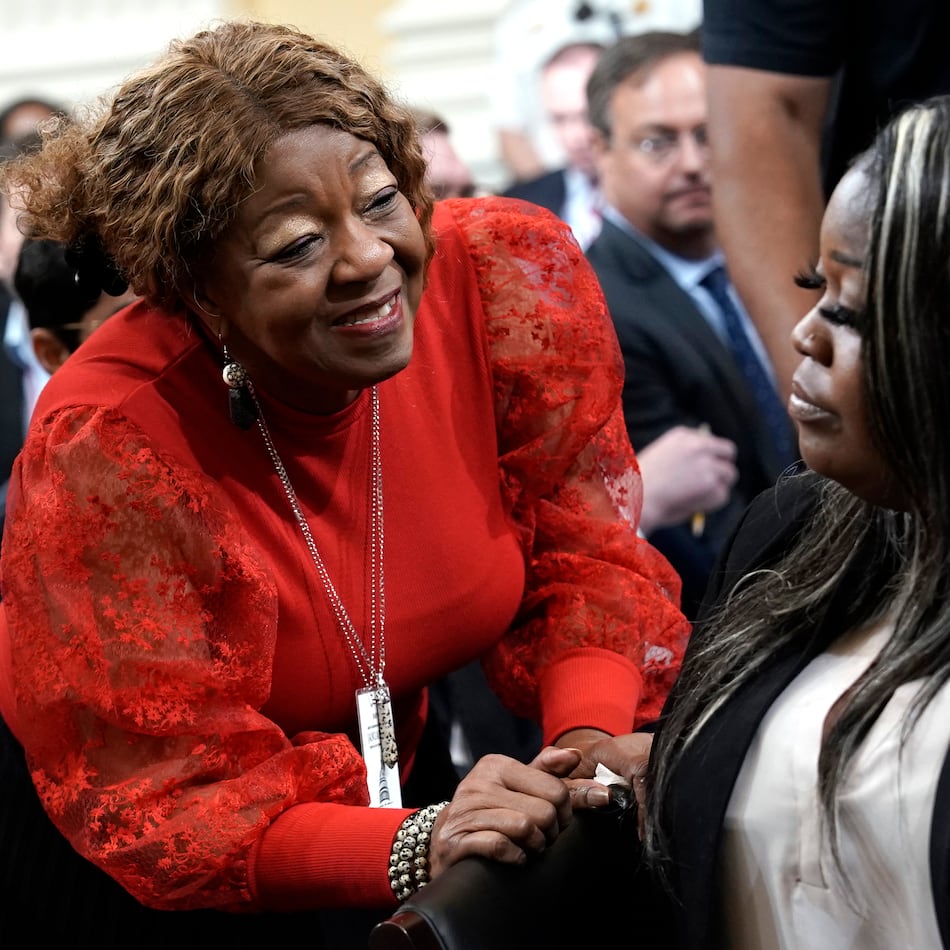Atlanta’s tourist guide touts Underground Atlanta as “a complete family experience with retail, specialty and gift shops, fast food, entertainment, special events, and plenty of restaurants.”
The four members of the Hammett family, visiting Underground Thursday from Knoxville, Tenn., could be identified as tourists at 100 paces. And as they entered that “family experience,” a young couple asked Kevin Hammett to change a $50 bill. A resident of Atlanta might innately know not to do such a thing there.
But Hammett, fresh off an enjoyable experience at the Georgia Aquarium and being an agreeable fellow from elsewhere, broke the lady’s $50, only to quickly discover the bill was not printed by the U.S. Treasury. Hammett found a cop who shrugged. Those things happen here, the officer responded.
“This place is a dive; we’ll never come back,” Hammett grumbled as they headed to their car. “I’m looking forward to getting out of this cesspool.”
Underground Atlanta is in the news again as the city moves to sell the money-losing proposition to someone who might figure out something better with it. In recent years ideas like making it a hip night spot or even a casino have been bandied about as ways to revive the long-troubled attraction. In the 1970s it was a night spot but died as much of the population viewed a visit to Underground as courting danger.
A greatly remodeled Underground reopened 1989 to great fanfare, but three years later the acquittal of Los Angeles policemen in the beating of Rodney King spurred violent disturbances throughout downtown Atlanta. Groups of teens and young men raged through Underground, breaking windows and overturning carts.
Joe Martin, who headed the organization that rebuilt Underground, said the rampage sealed the perception for many residents that Underground was unsafe, no matter how safe it was. “It’s almost as if Underground Atlanta is a monument to racial perceptions and fears,” he said a few years ago.
Today, Underground has become civic shorthand for a white elephant or as somewhere you went — once. It’s where the action isn’t. Or more so, if there is action, it’s the kind you want no part of, as the Hammetts learned this week.
The streetscape above Underground seems faded and lonely. The plaza with a dry water fountain largely draws pedestrians cutting through and loiterers.
The adjoining World of Coca-Cola museum moved northwest next to the aquarium, taking with it thousands of visitors and leaving an empty, gray mausoleum. The storefronts above Underground are mostly vacant or filled with hair-care joints, a couple retailers and a couple fast food restaurants. The Atlanta Visitors Center there has weather-faded awnings, one that is ripped and flapping in the wind. A couple motorcycle cops raced across the old-timey brick walkway without worry because pedestrians are so few.
Rody Davis, a repair man there on business, wondered if they were cordoning off the area near for an event because it was so empty. Does he ever come to Underground? Davis thought for a few seconds and shrugged, “I used to come to Hooters,” which left years ago.
Near the Peachtree Street entrance, Tim Grimes killed time as his niece and nephew shopped downstairs. In 1999, Grimes moved to Atlanta from Chicago and “the first stop after we unpacked our bags was the Underground. I’m surprised (the city wants to sell it). I don’t see many stores down there closed.”
Downstairs was a light but steady stream of visitors, mostly young and black. Most of the shops are still filled with tenants, that include shoe, hat, clothing and accessory stores. It seems a majority have SALE! signs beckoning visitors inside. The cobble-stone streets are lined with carts, several of them manned by merchants bemoaning a drop-off in foot traffic.
“Hi ya doin’, darling,” said a lively and funny woman who works to draw visitors to three carts. She would only identify herself as “Underground’s Finest,” and said business was better when she worked there three years ago.
“This place is slowly dying out,” she said before approaching a passerby with a burst of commercial enthusiasm.
At the entrance, Bridget Corrigan and a friend sat down after a 10-minute visit. The women were in town for a health care convention and exploring downtown. Asked what she thought, Corrigan said, “There wasn’t much down there.”
As she spoke, a large, gregarious man approached her friend, “Hey blue eyes!” he said. He grabbed her hand, noted there was no wedding ring and said, “This is my wife. Did you know that?”
The woman smiled nervously, inching away. “I love you,” he added.
After the men left, Corrigan noted Atlanta was a friendly city, although she added, “That was the wrong kind of friendly.”
Former Mayor Andrew Young had a vision for Underground where black and white Atlanta could recreate together easily. Few white visitors were there during a three-hour visit Thursday, and almost none who lived in the metro area.
Mark Hunt lives just a couple miles away in Inman Park, but can’t remember when he last visited Underground. Sometimes visitors will ask him about Underground. “But it’s way off the radar,” he said in an interview, echoing thoughts voiced again and again in interviews.
“It doesn’t occur to me to go down there,” said Hamilton Taylor, a thirty-something Dunwoody resident who works in finance and last visited the attraction with his parents when it opened.
Outside Underground, Benjamin Phillips and two friends were heading downstairs early Thursday evening ready for a stroll.
Phillips shrugged when asked about Underground (that action is almost universal when talking about the attraction). He likes to go there, although “a lot of people get harassed by security.” The place has seen better days, he said.
“It don’t catch nobody’s eye; people want to spend their money but there’s nothing to do,” he said. So why is he going again?
“I’m just going down there,” Phillips said. “I know what’s down there but, God bless, maybe there’s something different this time.”
About the Author
Keep Reading
The Latest
Featured


